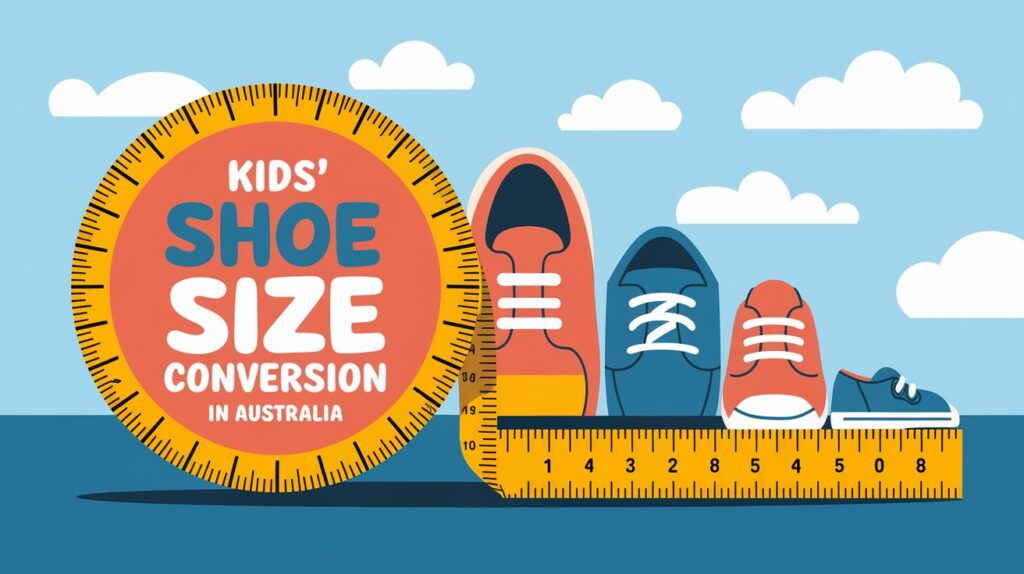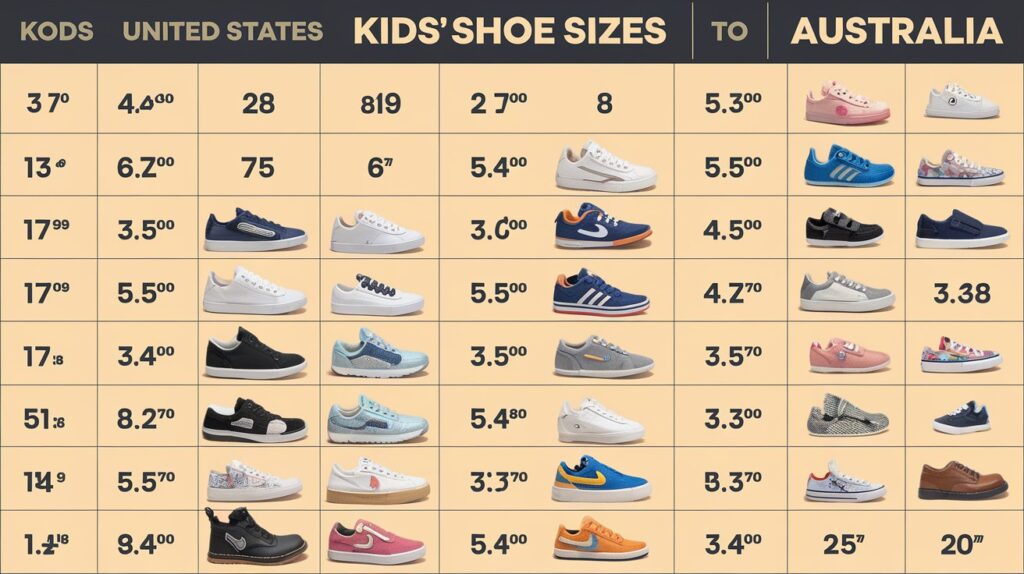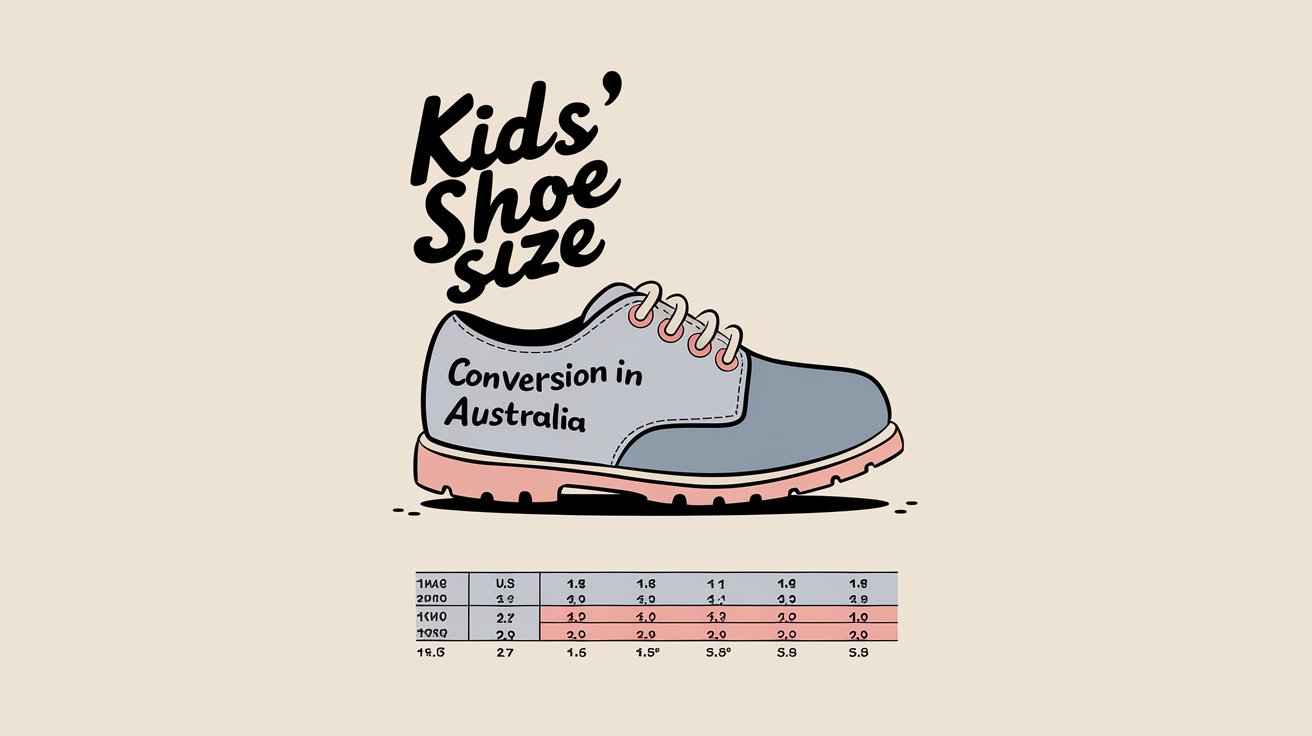Shopping for kids’ shoes can be challenging, especially when dealing with different international sizing systems. Australian shoe sizes often differ from US, UK, and European sizes, making it important for parents to know how to convert these sizes accurately for a proper fit. In this guide, we’ll break down the essentials of kids’ shoe size conversion in Australia, share practical tips on measuring little feet, and provide conversion charts to help you make the best decision for your child.
Understanding Australian Kids’ Shoe Sizes
Australian shoe sizes for children are typically influenced by the UK system, which means the conversion numbers are usually very similar to those used in the United Kingdom. However, minor differences can occur depending on the brand or manufacturer. Because children’s feet grow quickly, it’s critical to choose a sizing method that not only converts correctly but also ensures comfort and support.
In Australia, like many other regions, shoe sizes are marked in whole and half sizes. This system allows for a more precise fit, which is especially important for growing children. Remember that while conversion charts offer helpful guidelines, every brand may have slight variations in fit.
Why Getting the Right Size Matters

Proper shoe fitting is crucial for your child’s comfort and overall foot health. Shoes that are too tight may cause blisters, restrict growth, or lead to discomfort during play, while shoes that are too loose can increase the risk of tripping or developing an improper walking pattern. Ensuring the right size also contributes to better balance and can positively affect your child’s confidence when walking or running around.
How to Measure Your Child’s Foot
Before you consult any conversion chart, it’s essential to accurately measure your child’s foot. Follow these simple steps:
- Gather Your Materials:
You will need a piece of paper, a pencil, and a measuring tape or ruler. - Trace the Foot:
Have your child stand on the paper with their full weight on the foot to be measured. Trace around their foot carefully, making sure the pencil stays perpendicular to the paper. - Measure the Length:
Measure the distance from the back of the heel to the tip of the longest toe. Record this measurement in centimeters for better accuracy. - Measure Both Feet:
Since children’s feet can vary in size, always measure both feet and use the larger measurement as the basis for selecting the correct size.
Kids’ Shoe Size Conversion Charts for Australia

While Australian sizes are similar to UK sizes, here is a general conversion chart that compares Australian kids’ sizes with US and European sizes as a reference:
Toddlers & Little Kids (Approx. Ages 1-5 Years)
| Australian (AU/UK) Size | US Size (Kids) | EU Size | Approx. Foot Length (cm) |
|---|---|---|---|
| 0 | 0–0.5 | 15 | 9–9.5 |
| 1 | 1 | 16 | 9.5–10 |
| 2 | 2 | 17 | 10–10.5 |
| 3 | 3 | 18 | 10.5–11 |
| 4 | 4 | 19 | 11–11.5 |
| 5 | 5 | 20 | 11.5–12 |
Big Kids (Approx. Ages 5-12 Years)
| Australian (AU/UK) Size | US Size (Kids/Youth) | EU Size | Approx. Foot Length (cm) |
|---|---|---|---|
| 6 | 6 | 21 | 12–12.5 |
| 7 | 7 | 22 | 12.5–13 |
| 8 | 8 | 23 | 13–13.5 |
| 9 | 9 | 24 | 13.5–14 |
| 10 | 10 | 25 | 14–14.5 |
| 11 | 11 | 26 | 14.5–15 |
| 12 | 12 | 27 | 15–15.5 |
Note: These conversion charts provide general guidelines. It’s advisable to check with the specific brand’s conversion details as there might be slight discrepancies.
Tips for a Comfortable and Secure Fit
- Try Shoes On: When possible, have your child try on shoes in the afternoon since feet tend to expand slightly as the day progresses.
- Allow for Growth: Ensure there is a little extra room (roughly a thumb’s width) between the end of the toe and the shoe’s front. This space allows for natural growth.
- Consider the Shoe’s Purpose: Athletic shoes, casual shoes, and formal shoes may fit differently even within the same size. Choose styles based on the intended use.
- Review Customer Feedback: Online reviews often contain notes about whether a particular brand’s sizing runs large or small.
- Check Return Policies: If shopping online, make sure the retailer has a flexible return or exchange policy in case the shoes do not fit as expected.
Common Pitfalls and How to Avoid Them
- Over-Relying on Conversion Charts:
While charts provide a helpful starting point, always consider your child’s actual foot measurements and the unique fit of each brand. - Ignoring Foot Width:
Not all shoes are designed the same way; some brands may offer wide or narrow sizes. Monitor how the shoes feel on your child’s feet. - Assuming One Size Fits All:
Children’s feet grow at different rates. Regularly re-measure your child’s feet, especially if you notice tightness or discomfort. - Buying Shoes That Are Too Big:
Although it might seem practical to buy a larger size, shoes that are too big can lead to tripping or discomfort. Find a balance between growth room and a snug, secure fit.
Final Thoughts
Understanding kids’ shoe size conversion in Australia is all about blending accurate measurements with conversion guidelines and brand-specific information. By taking the time to measure your child’s feet and using the charts as a starting point, you can ensure that every pair of shoes fits comfortably and supports healthy foot development.
Remember, while conversion charts are invaluable, personal measurement and fit are paramount. Enjoy the process of finding the perfect pair for your little one, and know that healthy, happy feet will have a positive impact on their daily adventures!



Leave a Reply